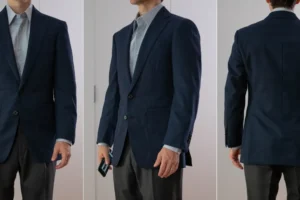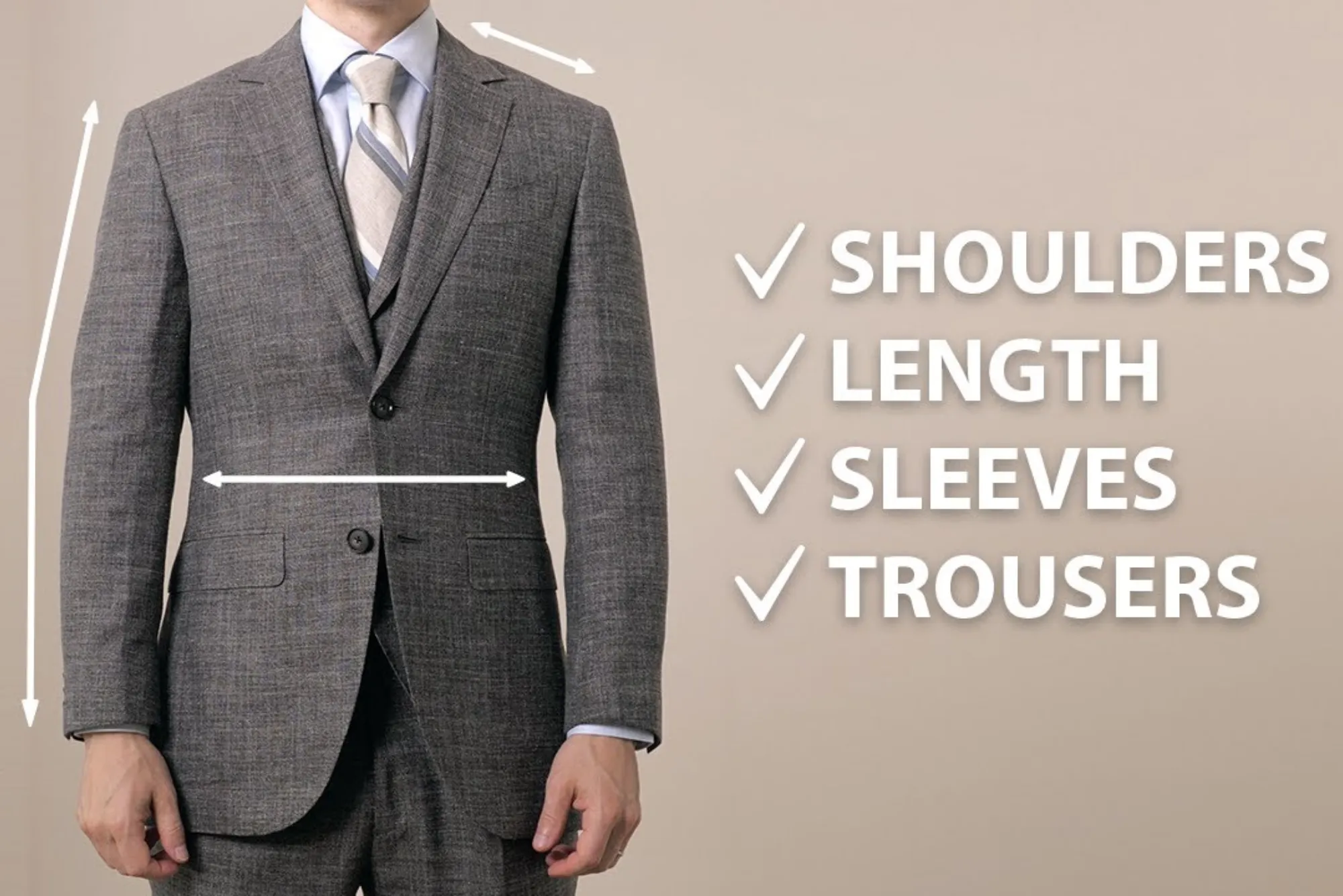When it comes to men’s suits, the fit of the jacket is crucial for achieving a polished and professional appearance. A well-fitted jacket not only enhances the overall look but also provides comfort and confidence. Understanding how a men’s suit jacket should fit is essential for anyone looking to make the right impression.
This article will delve into the key aspects of the perfect fit, covering the shoulders, chest, waist, sleeves, and overall length.
Shoulders
The shoulders form the foundation of any suit jacket. They should lie flat and end at your natural shoulder bone without extending beyond it. This alignment is essential because any deviation can ruin the jacket’s silhouette. The seam where the sleeve attaches to the jacket should align perfectly with the shoulder bone. If the seam extends beyond this point, it indicates that the jacket is too large.
Conversely, if the seam falls short of the shoulder bone, the jacket is too small. Additionally, there should be no divots or puckering in the fabric around the shoulders. Divots suggest that the jacket is too big, while puckering indicates it is too tight. Minimal padding is recommended to provide a natural contour to the shoulder line without creating an exaggerated shape.
Chest

The fit of the chest in a men’s suit jacket is crucial for achieving a sharp and tailored look. A men’s suit jacket should fit snugly around the chest without being tight, allowing for comfortable movement while maintaining a sleek appearance. The lapels of the men’s suit jacket should lie flat against the chest, indicating that the jacket fits well. If the lapels bow out or create gaps, it means there is too much fabric, and the men’s suit jacket is too loose.
Conversely, if there is strain or pulling when buttoning the jacket, it indicates that the men’s suit jacket is too tight around the chest. Achieving the right fit in the chest area is essential for a polished and professional look, as it ensures that the men’s suit jacket enhances your overall silhouette without compromising comfort.
Waist
A suit jacket should have a tailored fit around the waist to create a slight taper, accentuating your natural shape without being restrictive. This tapering provides a streamlined and sophisticated silhouette, enhancing the overall appearance.
There should be a subtle cinch at the waist, creating an hourglass effect that gives the jacket a tailored look. The jacket should not flare out excessively or be too tight around the stomach, as both extremes can ruin the clean lines of the suit. The goal is to achieve a balanced fit that follows the natural contours of your body.
Sleeves
The sleeves of the suit jacket play a significant role in achieving a balanced and proportionate look. They should end at the wrist bone, allowing about a half-inch of your dress shirt cuff to show. This classic detail adds a touch of sophistication and ensures that the jacket looks proportionate. The sleeves should be slim but not tight, with a slight taper towards the wrist.
This modern fit avoids excess fabric, which can make the jacket look bulky. The sleeve length should not extend past the base of your thumb, as this would cover the shirt cuff and create a sloppy appearance. Proper sleeve length is essential for a polished look.
Jacket Length

The overall length of the suit jacket is vital for achieving a balanced appearance. The jacket should cover your seat and fall around the mid-thigh area. When your arms are at your sides, the bottom of the jacket should align with your knuckles. This rule of thumb ensures that the jacket is neither too short nor too long.
A jacket that is too short can expose too much of your backside, while one that is too long can make you look shorter and less proportionate. The length of the jacket should provide balance and proportionality to your overall look, enhancing your silhouette.
Lapels
The lapels of a suit jacket should complement your body shape and size. Slimmer lapels are generally more modern, while wider lapels offer a classic look. The lapels should lie flat against your chest without bowing out, indicating that the chest and shoulders fit well.
The width of the lapels should be proportional to your body size and the overall style of the men’s suits. Too wide or too narrow lapels can throw off the balance of your appearance. The lapels are a prominent feature of the jacket, and their fit and style should align with your overall look and personal preference.
A well-fitted men’s suit jacket is essential for a sharp and professional appearance. By paying attention to the fit at the shoulders, chest, waist, sleeves, and overall length, you can ensure that your jacket enhances your look. Remember, a suit is not just about the fabric or design but how it fits your body.
A perfect fit provides both comfort and style, making you feel confident and poised. Whether you are dressing for a business meeting, a formal event, or a casual outing, a well-fitted suit jacket will always make a lasting impression.












